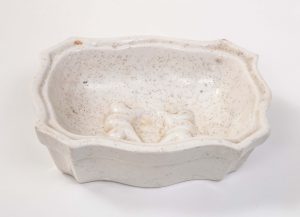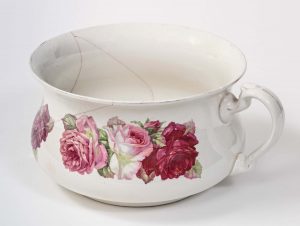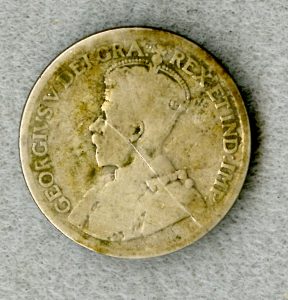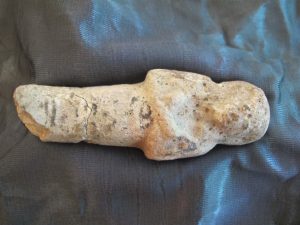Archaeology collections
Benares Archaeological Collection
In 1991, the Ontario Heritage Foundation conducted an archaeological excavation at Benares Historic House. The excavation’s biggest finds were in areas used as refuse dumps by the Harris family. These historically significant sites around the property helped to provide insight into the life of the Harris family. Some of the areas excavated included the perimeter of the house, the wine cellar, summer kitchen, carriage shed, dairy and ice house, bake oven, potting shed and the privy (out-house).
In all over 94,000 artifacts and fragments were found made out of materials such as glass, ceramics, buttons, bone and metal.
Our collection holds a small number of projectile points and bifaces that were found in fields or along streams and not recovered using modern archeological methods. Archaeologists from the Museum of Ontario Archaeology helped identified these items. The Museums do not collect Indigenous artifacts in keeping with Article 11 of the United Nations Declaration the Rights of Indigenous Peoples, but work with Indigenous peoples to provide opportunities for education and outreach.
Cherry Hill Archaeological Collection
Cherry Hill House, originally located at the northwest corner of Cawthra Road and Pinkeny Drive was moved in 1973 to its present location at 680 Silvercreek Boulevard. In 1972, Dr. Howard Savage conducted a test excavation to gather any information about the house before its move due to major road redevelopment. Over 30.000 artifacts of glass, ceramics, pottery, metal, bone and miscellaneous material were collected. The collection and research were turned over to the Bradley museum in 1986.
The land that was excavated was originally part of the ‘Mississauga Tract’, land that was purchased from the Mississauga Nation in 1805 as part of Treaty 13A. Jane and Joseph Silverthorn received this property in a land grant from the British Crown in 1807. Three generations of the Silverthorns lived in this location making the archaeological findings unique as they truly capture information on the lifestyle, health and aspirations of this family. They also give us a glimpse into the life of the three black servants who lived there including Jane Silverthorn’s former nanny, Dinah Green and Fanny Paul and her daughter, Lettie.
-

Ceramic dish soap, unknown manufacturer. Ca. 1800s. Ceramic dish soap, unknown manufacturer. Ca. 1800s. -

Chamber pot, ca. 1822 Rose pattern, glazed chamber pot with handle. May have one time had a matching lid. Unknown manufacturer. Chamber pot, ca. 1822 Rose pattern, glazed chamber pot with handle. May have one time had a matching lid. Unknown manufacturer. -

Coin, ca. 1917 Canadian Silver 25 cents. Image of King George V during coronation. Coin, ca. 1917 Canadian Silver 25 cents. Image of King George V during coronation. -

Egyptian Shawabti or guardian figure. Painted with the inscription ‘Overseer of the Fortress’ or ‘Overseer of the Vizirate’. This shawabti would have been one of many which were placed in the tomb of a highly placed military commander or in the latter case, the Prime Minister, as a small servant figurine that would accompany the dead to the next world. This may have been collected by Captain James Harris while he was an officer with the 24th Regiment of Foot. He served in India and may have passed through Egypt on his way to the posting. Egyptian Shawabti or guardian figure. Painted with the inscription ‘Overseer of the Fortress’ or ‘Overseer of the Vizirate’. This shawabti would have been one of many which were placed in the tomb of a highly placed military commander or in the latter case, the Prime Minister, as a small servant figurine that would accompany the dead to the next world. This may have been collected by Captain James Harris while he was an officer with the 24th Regiment of Foot. He served in India and may have passed through Egypt on his way to the posting.